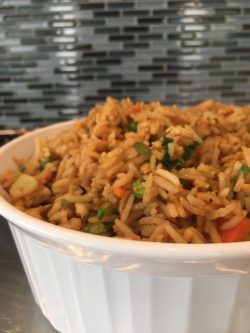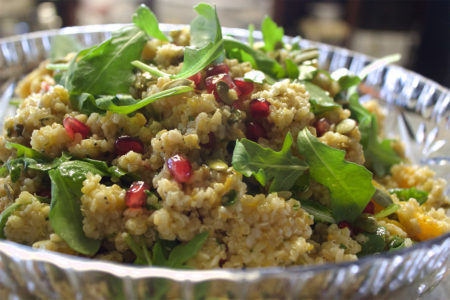After all of our delicious holiday celebrations, many of us are feeling motivated to start a healthy eating routine in the New Year. Whether dieting is your New Year’s Resolution or you have simply decided to cultivate healthy habits in 2018, here are five easy tips for the kitchen that will help you to cook more healthfully this year.
- Choose Your Oils Wisely. Swap out the butter for a healthier alternative. Try olive, vegetable or coconut oil, which are rich in fatty acids. Just remember to keep in mind the “flash point” or the point at which the oil burns, which will be different for each (for example, coconut oil burns at a lower temperature than vegetable oil.)

- Be Creative With Your Spices. In order to cut down on salt, think about how to incorporate other fresh or dried herbs and spices into your dishes. For example, try adding a vinegary hot sauce to your bean soup or crushed red pepper to your sauteed veggies. A little heat goes a long way when it comes to flavor!
- Choose Lean Protein. As much as we love filet mignon, when we are trying to eat healthfully, we choose chicken, fish, or lean cuts of pork instead of beef, lamb, or cured meats like ham. Make use of those spices by seasoning chicken breast and pork loin with a simple steak seasoning and pan searing for a healthy protein-packed entree.
- Use Acid To Enhance Flavor. In addition to spices, acids like lemon, lime, and even that half-empty bottle of wine from the holidays can add some serious flavor to almost anything. Try deglazing a pan of caramelized broccoli, green beans, or asparagus with a splash of white wine and a sprinkle of salt and pepper will make the perfect side to accompany your lean protein main.

- Mix Up Your Starches. Swap out potatoes for quinoa, bulgur, or polenta. Remember that whole grains take longer for the body to digest, leaving you feeling satisfied longer. To amp up the flavor, throw a bay leaf, sea salt, parsley stems, and thyme into the mix for a fresh, herbaceous compliment to light dishes such as broiled fish.

Remember, you can apply these tips to many types of meals. Don’t get stuck in the rut of lean protein-vegetable-whole grain starch for every meal. Think about creating hearty soups or salads (including quinoa or bulgur salads) for a main course during the week. Make sure your diet is well balanced with carbohydrates (your body’s main energy source), vegetables high in vitamins and minerals, lipids(important for absorption and digestion) and make sure to drink plenty of water.
And one last tip: don’t forget to indulge in a delicious meal featuring your favorite foods every once in a while!

